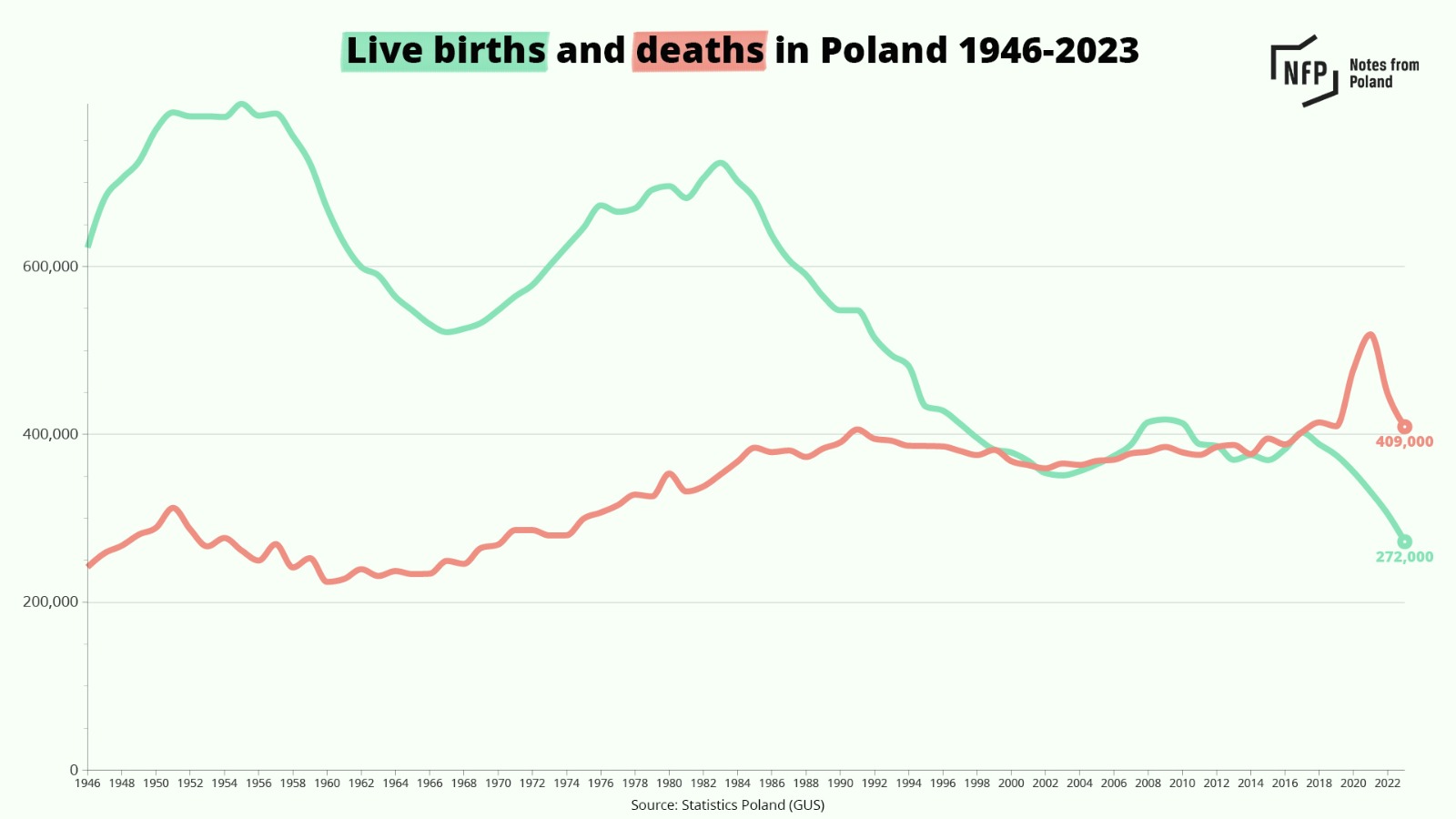The number of births in Poland last year was the lowest the country has seen since the Second World War. It was also the 11th year in a row in which deaths have exceeded births, during which time the country’s population has fallen by almost one million.
New data from Statistics Poland (GUS), a government agency, show that there were 272,000 live births in 2023, down from 305,000 the previous year. The number of deaths stood at 409,000, a slight fall from 448,000 in 2022 and returning to around the pre-pandemic level of 410,000 seen in 2019.

GUS’s figures also show that December 2023 saw only 19,000 births, which was the lowest monthly total since the war.
The agency estimates that, at the end of last year, Poland’s population stood at 37.6 million, which was 130,000 lower than a year earlier and around 900,000 lower than the population of 38.5 million recorded in the 2011 national census.
“We have been observing population decline continuously for over a decade,” wrote GUS. “In 2023 it was smaller than in the two previous years, but still much larger than before the pandemic.”
The annual number of births in Poland has fallen 11%, the first time the figure has hit double-digit levels.
Poland's birth rate has been in sharp decline since 2018 and is among the lowest in Europe.
Read more here ⬇️ https://t.co/3jN6RvHPHX
— Notes from Poland 🇵🇱 (@notesfrompoland) October 26, 2023
The former national-conservative Law and Justice (PiS) government, which was in office until last month, sought to address this demographic decline with a host of “pro-family” policies designed to encourage childbirth.
After the introduction of its flagship “500+” child benefit programme in 2016, there was a brief rise in the number of births. But that quickly reversed and births went into rapid decline.
The new government led by Donald Tusk has pledged to continue the child benefit programme but also to introduce new payments for mothers who return to work.
Meanwhile, Poland has also seen record levels of immigration over the last decade, with GUS estimating that mothers from abroad are now responsible for 5.5% of births. The agency last year predicted Poland would need to attract almost two million immigrant workers over the next decade to combat demographic decline.
The number of foreigners in Poland’s social insurance system rose 6% in 2023 to reach 1.13 million. Immigrants now make up almost 7% of all those in the system
The largest increases were recorded by Belarusians, Ukrainians, Indians, Colombians and Nepalis https://t.co/eA1QVo0ydH
— Notes from Poland 🇵🇱 (@notesfrompoland) January 27, 2024

Notes from Poland is run by a small editorial team and published by an independent, non-profit foundation that is funded through donations from our readers. We cannot do what we do without your support.

Daniel Tilles is editor-in-chief of Notes from Poland. He has written on Polish affairs for a wide range of publications, including Foreign Policy, POLITICO Europe, EUobserver and Dziennik Gazeta Prawna.



















